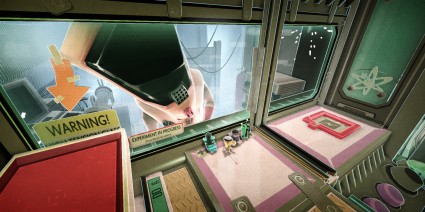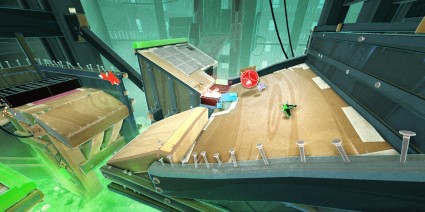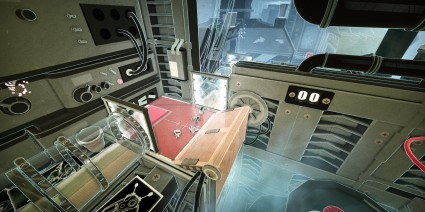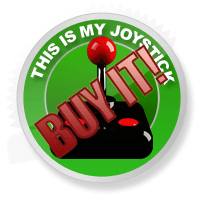Reviews
Tiny Brains
February 13, 2014, Author: Neil Hickton
The Montreal-based developer Spearhead Games has released Tiny Brains on Steam, PS3 and PS4. This indie studio has some impressive credentials indeed, or at least it does due to the fact that at least three ex-triple-A developers founded it; namely Simon Davreau, Atul Mehra and Malik Bourkhira.
While you may not recognise their names without Googling them, the games they’ve taken the lead to develop will be immediately recognisable. Assassin’s Creeds 2 and 3, Dead Space 3 and the Army of Two franchise. Tiny Brains seems a bit of a departure from their previous developments, and its relationship to these others is easily overlooked until you consider the puzzle elements of the Assassin’s Creed franchise, for example.
Tiny Brains opens in a laboratory where a scientist is running a series of tests. Coincidentally, these help to explain the four different characters and their individual abilities. Their skills are fairly self-explanatory and, as they only have one skill each, it is fairly simple to understand. When playing in single-player, you have to flick between each to complete the puzzle set before you. This may involve reaching switches, extending bridges and manipulating a host of other contraptions to open the exit on each level.
It took me a while to realise what creature each furball was meant to represent, simply because I was more focused on their distinct colours and individual abilities, rather than their genus. There’s a bat, a hamster, a mouse and a rabbit, all standing equal in height. It turns out they have names too: Dax, Minsc, Pad and Stew. A rabbit called Stew. Ha, rabbit stew. Oh dear, I’ll get my coat.
For my initial play-through I chose to confront all the challenges on my own in single-player. I found it quite overwhelming at first while switching between the creatures, attempting to use their special attributes in time with the puzzle and the decay of each power. I won’t say it becomes second nature, but I did become accustomed to the switching, sort of. Just as you start a power you may need to combine it with another creature’s power to allow you to jump further or higher than they could individually, for example.
Some areas see your mighty-but-mini quartet having to protect someone or something; I won’t spoil the details, but it does make for some happy chuckling at the reveal. The humour in Tiny Brains did raise a laugh from me on a number of occasions and the silly, if a little cliché story is perfect to keep you moving and engaged. When I say a little cliché, all I have to say here is the experiments are a creation of a mad Russian scientist. Enough said.

Picking the ideal pet is just about finding the one with the right attributes
In co-op play Tiny Brains becomes a game of communicate or fail. Without clear discussion of the problem at hand, agreeing what you intend to do and when, the puzzle will not be completed. The intention of the designers appears to be to create a sense of panic that the whole team have to experience, and panic you will.
Each level leads you onwards, and there is a powerful draw just to keep on playing due to the way the levels are connected together via little pathways and rooms that you have to traverse before handling the next puzzle.
Playing with other real players locally or online is well supported, and in my experience it has been positive. Occasionally you may need to restart a level if someone drops out though, as they will sit waiting patiently for you to finish your current game. Given the inter-level structure, you will not finish your game until you reach an end of chapter. So in short, if someone drops out and wants to come back in, you will need to go back to the main menu and start your level again.
Adding real-life players can become more frustrating, particularly if you know what needs to be done but the others don’t appear to be listening to you. If you are in a four player co-op game you won’t be able to take control of different powers, stuck in your chosen rodent’s singular capability. While this is a little frustrating it’s not a bad thing, and it really makes you want to work more readily together to get it right. On the other hand, if you’re unlucky enough to be in a game with unhelpful persons you’ll want to rage-quit, I’m sure of it.
The main difference I found between single-player and co-op was that the puzzles don’t necessarily need to be completed in the same way. By this I mean you may not need to move a character back to a certain point as you might need to in single-player. What then happens is characters can be left to die and will then be respawned back with the surviving players. After playing the single-player, the immersion of the story is impacted when these moments occur.

Tiny Brains at its most frantic, trying to keep a sphere in play.
Frantic minutes can be had in the challenge modes that pit you and a ball against a course consisting of varying holes and things blocking your way. The challenge generally involves attaining the greatest distance you can manage with a time limit, and it is these stats that are then posted against the rest of the world on a leaderboard.
While the story lasts for about four hours or so, Tiny Brains‘ focus is more about replay value, preferring to make you try again, but the challenge becomes less about solving a puzzle and more about completing it faster. On the way through the story mode there are collectibles hidden in odd places to look out for, helping Tiny Brains increase its longevity.
The cartoon visuals are nice, bright and cheerful, making me instantly think of a mix between Monsters Vs Aliens and the Pinky and the Brain cartoon (Animaniacs! Possibly the best 90’s children’s cartoon ever, in my opinion). Playing this on the PS4 I had expected no issues graphically, though early on I was aware of screen-tear as the camera wanders between the puzzles; however, I didn’t perceive any tearing later on in the game. So either it was just the opening scenes are more grandiose than the latter half, or it didn’t actually upset my experience as much as my initial picky-self felt it would. Either way, it’s not really an issue as it doesn’t impact the enjoyment to be found in Tiny Brains.

The scenery makes you and your buddies feel small while scurrying inside the lab and its experiments.
The world was to me a secret which I desire to divine…
The way Tiny Brains plays out can be very chaotic at times, if you’re not prepared for what’s happening on screen. Playing solo will leave you flicking between all four characters trying to remember the sequence so that you can perform the necessary combinations to complete each puzzle. Playing with others will make you feel a little lost at times unless you work together, although this is not a negative. What I found is that while all characters are needed, you will use one particular combination more than the others. I feel this was something the developers could have worked on further to increase the use of other potential combinations.
Tiny Brains has a charm that is hard not to acknowledge and if you enjoy puzzle games you will find it a fun challenge for sure. Adding three real-life friends, or perhaps strangers, adds to the chaos and while limiting your involvement in all things, it severely increases your need to work as part of an effective team. The evolving need for teamwork is Tiny Brains’ biggest strength, and if you don’t talk to each other to work out a puzzle you will get nowhere fast.
Perhaps you’ll play the story mode once and never go back. Perhaps the challenge of keeping a ball in play or finishing a puzzle faster to beat the leaderboard and your friends’ scores is enough to keep you playing for longer. I’m glad I played Tiny Brains and I will play it again, but perhaps when I want a party game to play with my friends. While the story mode is perhaps a little short, I’d recommend playing Tiny Brains just to experience the fun and excitement of playing with others, together.
Platforms: PC, PS3, PS4 | Tagged Animanics, Army of Two, Army of Two: 40th Day, Assassins Creed, Assassins Creed II, Assassins Creed III, Dead Space 3, Monsters vs Aliens, Pinky and the Brain, PS3, ps4, Steam, Tiny Brains



